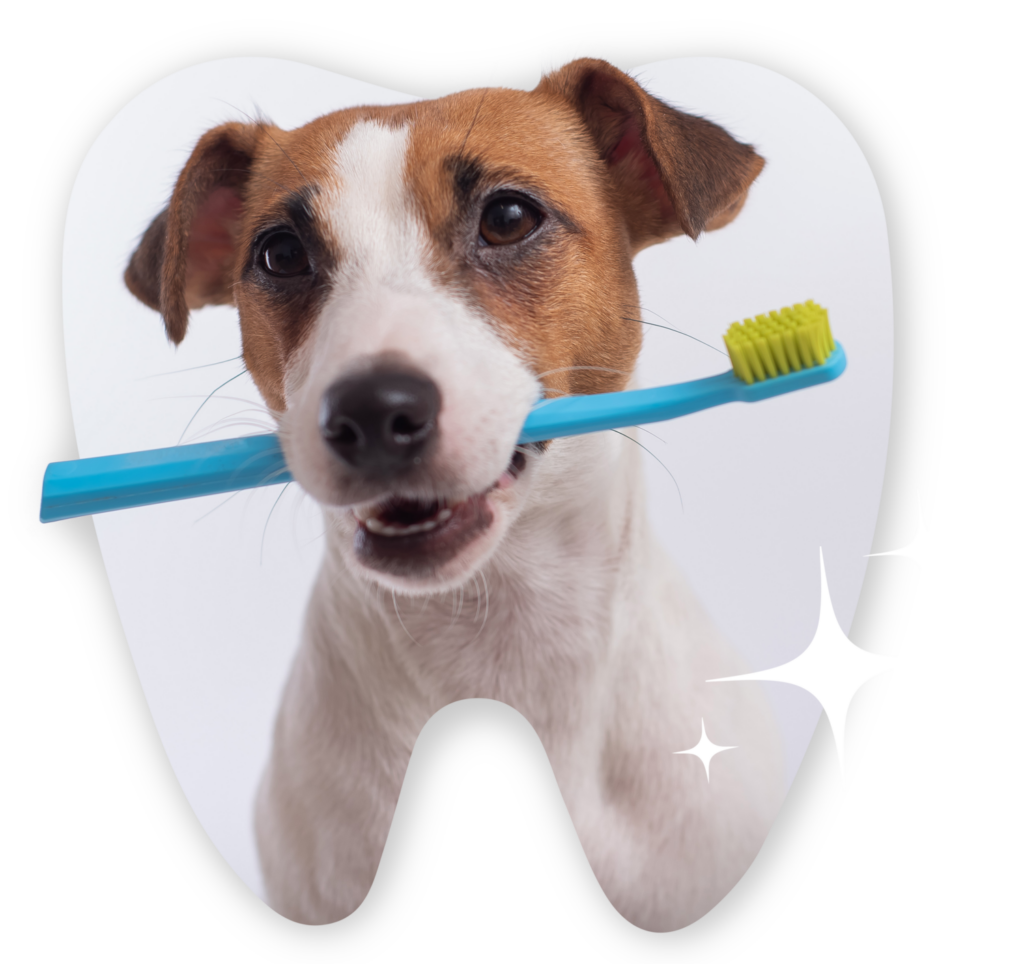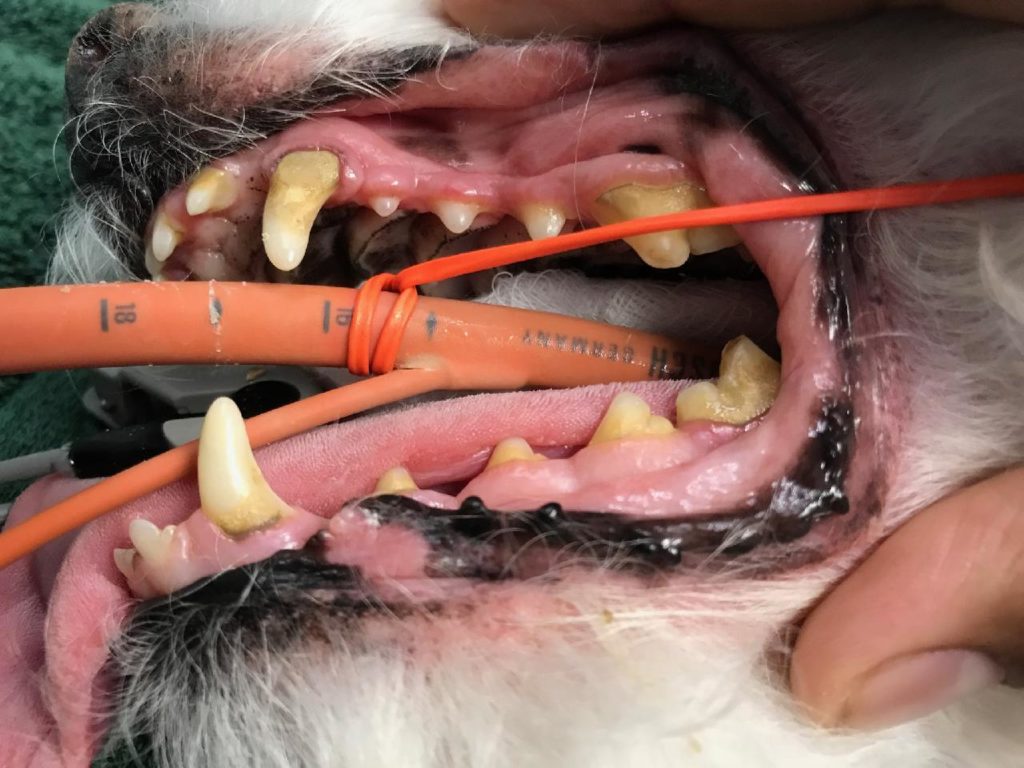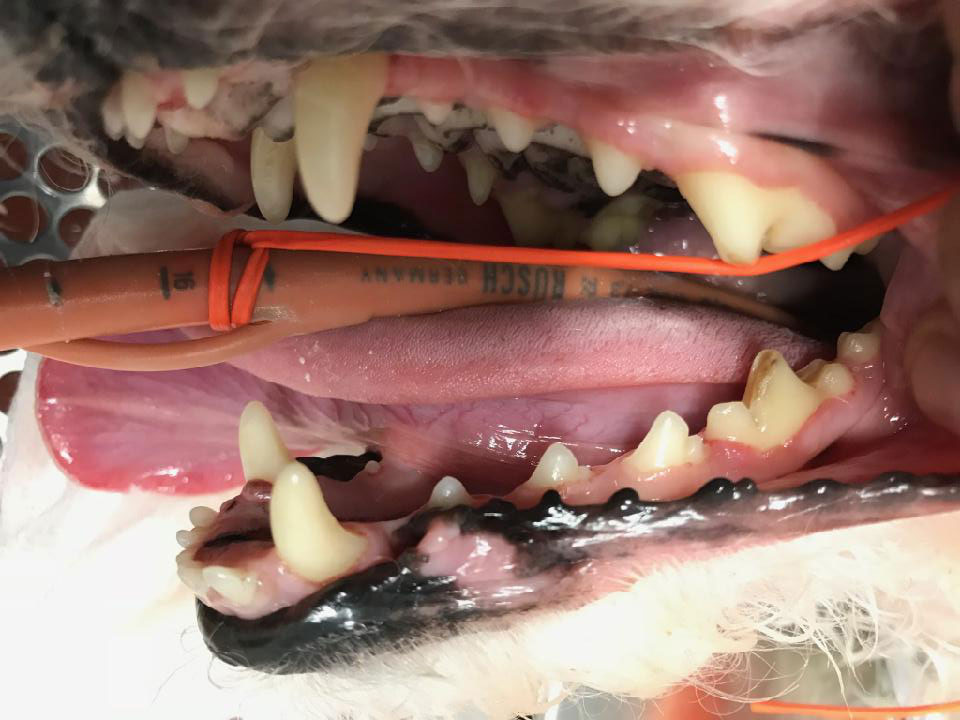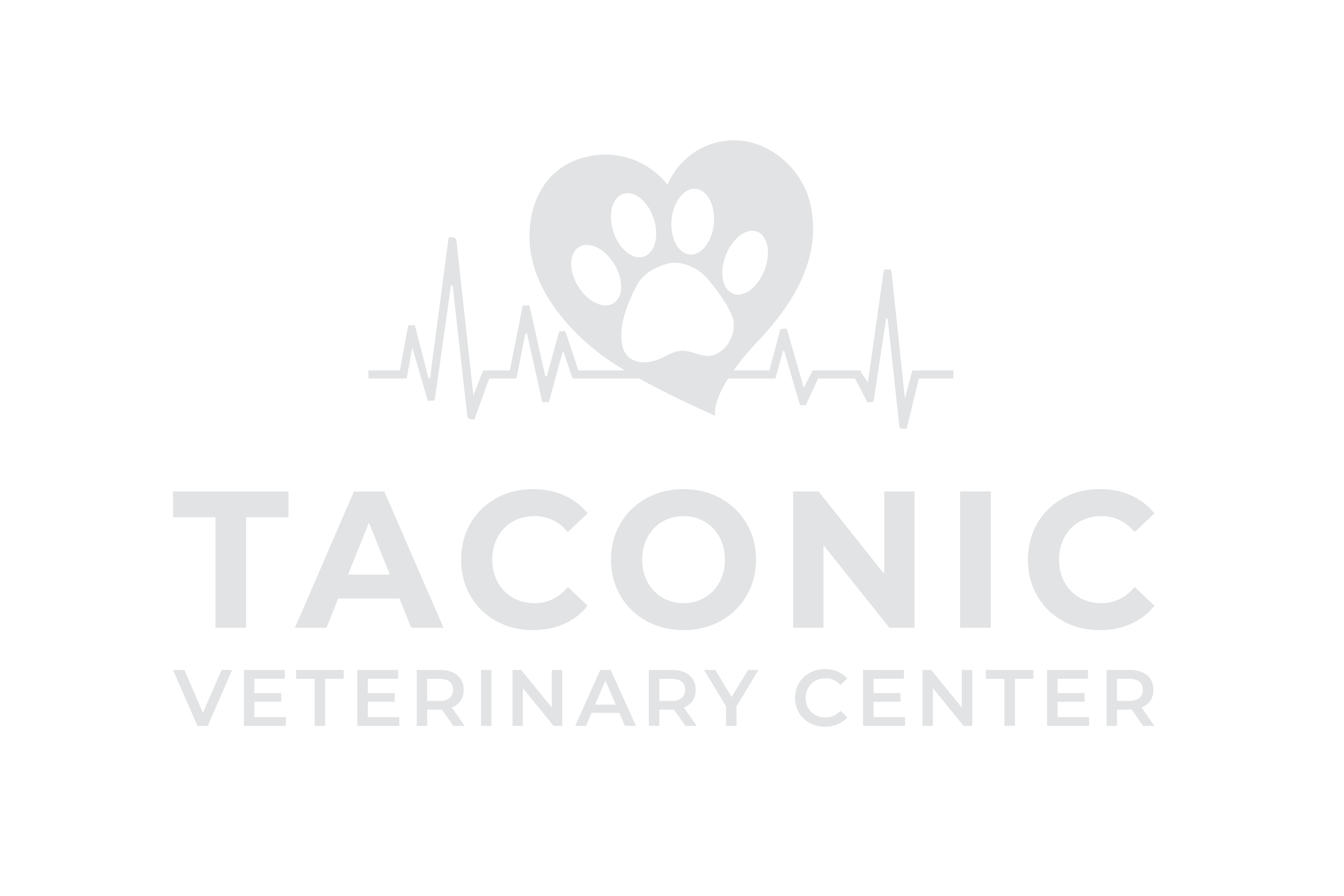Dental Days Deal
$100 off Dental Cleanings
For new and existing clients!
Call (914) 737-2437 to schedule a cleaning today!

2/12 2024 – 3/15 2024
*Not valid with any other offer. Canine and Feline only. Not redeemable for cash. May use offer on multiple pets within the same household.
Dental Days Deal
$100 off Dental Cleanings
For new and existing clients!
Call (914) 737-2437 to schedule a cleaning today!

2/12 2024 – 3/15 2024
*Not valid with any other offer. Canine and Feline only. Not redeemable for cash. May use offer on multiple pets within the same household.
At Taconic Veterinary Center, we recommend a professional cat or dog teeth cleaning at least once a year. According to the American Veterinary Dental Society, roughly 80% of dogs and 70% of cats show signs of dental disease by age 3.
Dental disease can open the door to a host of other problems that can affect not just your pet’s mouth, but their major internal organs, as well. Consistent home dental care, routine oral examinations, and professional teeth cleanings at our practice can help you prevent these problems so your pet can enjoy consistently good health for years to come!
What is Dental Disease?
Dental disease is the most common ailment in small animals over the age of five. It develops when bacteria from plaque and tartar in your pet’s mouth seeps below the gum line, causing an infection. Without treatment, this infection can cause inflammation of the gums, soreness of the gums, loose teeth, and potential disease of the heart, liver, and/or kidneys.
How We Can Treat Dental Disease in Dogs and Cats
Our medical staff is well trained to image, diagnose, and treat dental disease. Our CT imaging quickly generates a 3-dimensional computerized model of your pet’s mouth. Combining this information with an in-depth oral exam, your veterinarian can pinpoint problem teeth and provide appropriate treatment including dental scaling, polishing, localized periodontal antibiotic treatments, and extractions as needed.
A multimodal approach, including use of non-steroidal anti-inflammatories, opioid pain medications and oral nerve blocks, will be used to address any pain associated with your pet’s dental procedure.
Signs Your Pet Needs Dental Care
There are many different ways to check and see if your pet may be having dental issues, but there are also signs that may not be as visible. Here are some things to keep an eye out for:
Bad breath
Broken, loose, or missing teeth
Discoloration or tartar build up
Excessive chewing or drooling
Reduced appetite or inability to chew
Swelling and bleeding in or around the mouth
If your pet is having any of these problems, they should see us as soon as possible for an oral exam.
What Do Teeth Cleanings Entail for Dogs and Cats?
Cleaning your pet’s teeth involves multiple steps to ensure their safety, and allow our team to be as thorough as possible with their treatment. These steps include:
Anesthesia and IV Catheter Placement
Once your pet’s health has been thoroughly assessed via an exam and blood work prior to their teeth cleaning procedure, we will place an IV catheter to safely deliver forms of anesthesia and IV fluids to support blood pressure and flush out toxins. If your pet has significant gingivitis, we will also provide an injectable dose of antibiotics to protect the bloodstream and begin the healing phase.


Full Mouth CT Scan
We perform a CT scan of your pet’s whole mouth to check for retained roots, damaged roots, bone loss, root abscesses, enamel defects, and other dental problems hidden under the gum line.
Complete Oral Exam
As soon as your pet is under general anesthesia, we will conduct a complete examination of their mouth, searching for pockets indicating bone loss, broken teeth, or tumors.
Cleaning the Teeth
The entire crown of each tooth is cleaned with an ultrasonic scaler instrument. We also perform a root-planing procedure to remove plaque and bacteria from under the gum line. When all the debris have been removed, we polish the crown of each tooth and administer fluoride treatment to strengthen the enamel. We also recommend applying a sealant to your pet’s tooth enamel to further aid in its protection.

Common Pet Dental Care Questions
WHY IS ADVANCED DENTAL IMAGING IMPORTANT?
Advanced dental imaging is essential to complete the dental assessment and generate an acceptable therapeutic plan. Because 50% of each tooth is below the gum line, it is not possible to examine the entire tooth using any other method. We recommend a full mouth CT scan for every pet and every dental procedure just like your dentist does for you. CT scan will uncover any hidden painful disease, such as root abscesses, root fractures, severe bone loss of the jaw and cystic lesions, so that they can be corrected during the procedure. CT is especially imperative in pets due to their high tolerance for pain and inability to communicate it.
WHAT IS THE ORAL HEALTH PROCEDURE?
STEP 1: SUPRAGINGIVAL CLEANING
The tartar and plaque that is visible above the gum line is removed so that all surfaces of each tooth may be visualized.
STEP 2: SUBGINGIVAL CLEANING
This is cleaning the area under the gum line. In our animal patients, this is the most important step. The subgingival plaque and calculus are what cause periodontal disease. This is the most common ailment diagnosed in ALL animal patients. Cleaning the tooth surface above the gum line will make the teeth look nice, but in reality, it does little medically for the patient.
STEP 3: ASSESSMENT
The veterinarian evaluates the entire oral cavity and records any abnormalities on a special dental record. Some examples of oral abnormalities are: tongue or lip lesions, deep pockets in the gums around the teeth and loose, broken or discolored teeth.
STEP 4: ADVANCED DENTAL IMAGING
Advanced dental imaging is taken of every tooth in the mouth to discover problems, such as retained roots, enamel defects, root abscesses and bone loss due to infection.
STEP 5: POLISHING
The mechanical removal of the plaque and calculus causes microscopic roughening of the tooth surface. This roughening increases the retentive ability of the tooth for plaque and calculus. Polishing will smooth the surface and decrease the adhesive ability of plaque.
STEP 6: SUBGINGIVAL LAVAGE
The scaling and polishing of the teeth will cause a lot of debris to become trapped under the gums. This will cause local inflammation, as well as increase the chance of future periodontal disease. For this reason, we gently flush the gingiva with an antibacterial solution.
STEP 7: FLUORIDE TREATMENT
The benefit of fluoride is that it strengthens enamel, decreases tooth sensitivity and is reported to slow the formation of feline oral resorptive lesions thanks to its anti-plaque qualities. Fluoride can be toxic if swallowed by dogs and cats; therefore, we carefully remove any excess fluoride from the mouth before waking your pet.
STEP 8: TREATMENTS
If any abnormalities were found during the assessment and dental advanced imaging, various treatments may be recommended. Some examples of treatments are: tooth extraction, bonded sealants of fractures and local antibiotic treatment of pockets around the teeth. The veterinarian will explain any abnormalities and discuss treatment options. We are happy to provide an estimate at each stage of this procedure.
STEP 9: PREVENTION
Prevention is one of the most important parts of the oral hygiene procedure.
COULD MY PET BE IN PAIN?
Our pets have a strong natural instinct to hide pain, so this can be difficult to recognize. Many times, they will mask the pain and owners may not even notice a difference in their pet’s eating or day-to-day routines. This is why our pets will continue eating, even if their teeth look or smell bad. Some lesser-known indications of pain include increased licking, altered or heavy breathing, changes in posture, and changes in sleep habits.
WHY DO YOU USE ANESTHESIA?
While there are multiple reasons for anesthesia, the most important is that it maintains the safety and comfort of your pet. Evaluating and cleaning your pet’s teeth is a delicate process that requires a good amount of time. Have you ever tried to brush your pet’s teeth? It can be difficult. Now imagine trying to work on their mouth for an extended period of time! Without anesthesia, your pet would have to be restrained, leading to stress and tension. Using anesthesia allows us to mobilize the pet to clean the gums (where the problems lie), control pain, and place a tube into the windpipe to stop bacteria from entering the respiratory system.


